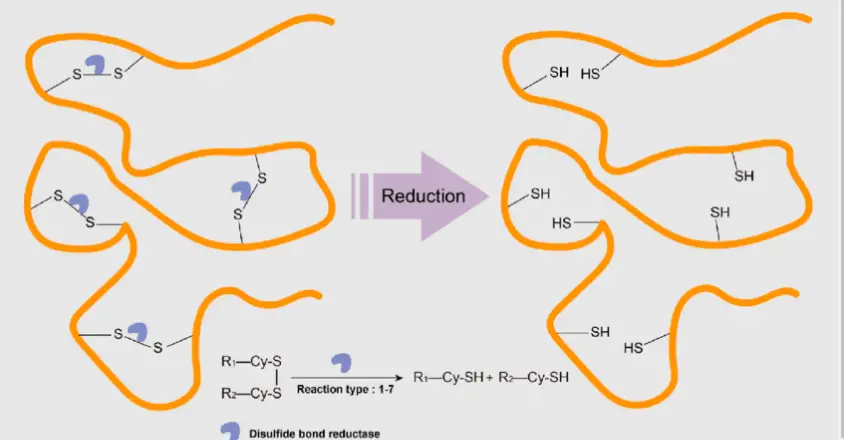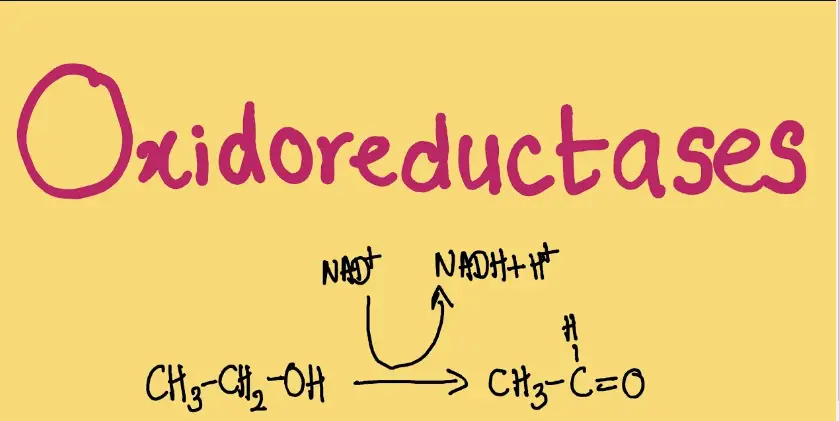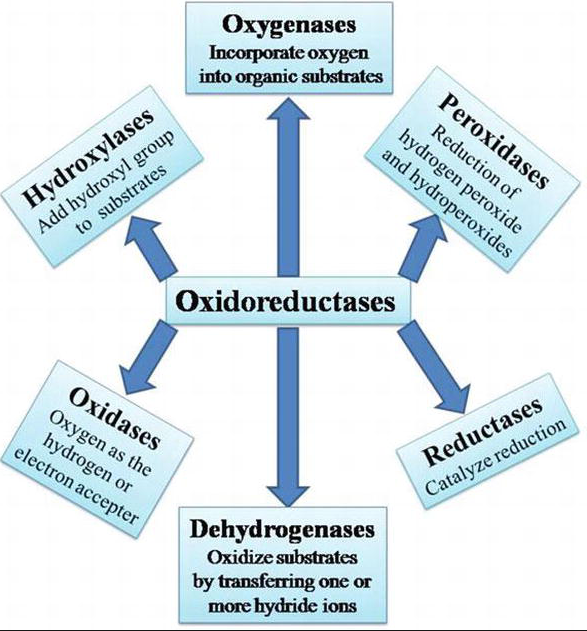Enzymes are crucial for catalyzing a myriad of biochemical reactions in both living organisms and industrial processes. Among these, reductases and oxidoreductases play pivotal roles, each facilitating specific types of chemical transformations. This article focuses on these two types of enzymes, highlighting their unique functions and significance.
Reductases are enzymes that catalyze the reduction reaction where a molecule gains electrons, often from NADH or NADPH. Oxidoreductases, on the other hand, are a broader category of enzymes that catalyze oxidation-reduction (redox) reactions, where the oxidation states of atoms are modified through the transfer of electrons. These enzymes are essential in energy production, cellular respiration, and various metabolic pathways.
Both reductases and oxidoreductases are indispensable in maintaining the balance of biological systems, facilitating processes ranging from energy generation in cellular respiration to the synthesis of complex molecules. Their roles extend beyond the biological realm into biotechnological applications, including the production of pharmaceuticals and the degradation of pollutants.

Enzyme Basics
Definition and Function
Enzymes are biological catalysts that speed up chemical reactions in living organisms without being consumed in the process. Each enzyme is specific to a particular reaction or type of reaction. This specificity stems from the enzyme’s ability to bind to a substrate—the molecule upon which the enzyme acts—to form an enzyme-substrate complex. This binding facilitates a change in the substrate’s chemical structure, leading to the formation of a product.
Role in Metabolism
In metabolism, enzymes play a crucial role in facilitating metabolic pathways that convert nutrients into energy and new components within cells. This includes:
- Breaking down complex molecules to extract energy.
- Converting energy from one form to another.
- Synthesizing complex molecules from simpler ones.
These reactions are critical for cellular respiration, digestion, and the regeneration of cells and tissues.
Reductase Overview
Definition and Role
Reductases are a type of enzyme that catalyze the chemical process of reduction—the gain of electrons or a decrease in oxidation state by a molecule, atom, or ion. They are pivotal in various biochemical pathways, particularly those involved in anabolic processes where smaller units are built up into larger molecules.
Common Types and Examples
Reductases can be classified based on the specific reactions they catalyze. For example:
- Nitrate reductases: Convert nitrate to nitrite, crucial in nitrogen assimilation.
- Thioredoxin reductases: Involved in the reduction of thioredoxin, playing a role in oxidative stress response.
Oxidoreductase Explained
Defining Characteristics
Oxidoreductases encompass a broad group of enzymes that facilitate oxidation-reduction reactions, involving the transfer of electrons from one molecule (the reductant) to another (the oxidant). This category includes enzymes such as dehydrogenases, peroxidases, and oxygenases.
Key Functions and Examples
- Dehydrogenases: Remove hydrogen atoms from substrates, crucial in cellular respiration.
- Peroxidases: Reduce peroxides, helping in protecting the cell from oxidative damage.
Key Differences
Reaction Types
While both reductases and oxidoreductases catalyze redox reactions, the specificity of the reactions they catalyze distinguishes them:
- Reductases: Typically focus on electron gain by the substrate.
- Oxidoreductases: Handle both the removal and addition of electrons.
Active Sites and Cofactors
The active sites of these enzymes are uniquely suited to their specific substrates and reactions. For instance, reductases often require cofactors like NADH or NADPH that act as electron donors. Oxidoreductases may use similar cofactors but are structured to either accept or donate electrons.
Substrate Specificity
Reductases are generally specific to molecules that need to gain electrons, such as nitrate or aldehyde groups. Oxidoreductases, on the other hand, have a broader range of substrates, reflecting their role in both oxidation and reduction processes.

Biological Significance
Importance in Cellular Processes
Reductases and oxidoreductases are fundamental to maintaining cellular homeostasis and function. These enzymes facilitate a range of reactions that are crucial for cellular energy balance, detoxification, and synthesis of vital components. For example, in cellular respiration, oxidoreductases like cytochrome oxidases play a key role in the electron transport chain, which is vital for ATP production—the energy currency of the cell.
Examples in Human Health
The importance of these enzymes extends to human health, where they are involved in critical biochemical pathways:
- Glucose-6-phosphate dehydrogenase: This enzyme helps protect red blood cells from damage and breakdown. Deficiencies can lead to hemolytic anemia.
- HMG-CoA reductase: Key in cholesterol synthesis, this enzyme is the target of statins, drugs commonly prescribed to lower cholesterol.
Industrial Applications
Usage in Pharmaceuticals
Reductases and oxidoreductases have significant applications in the pharmaceutical industry. They are used to synthesize key intermediates in drug production. For instance:
- Statins production: HMG-CoA reductase inhibitors, used widely to manage and treat high cholesterol and related conditions.
- Antibiotic synthesis: Specific reductases are used to produce antibiotic compounds, enhancing their effectiveness and stability.
Roles in Biotechnology
In biotechnology, these enzymes are employed to develop environmentally friendly solutions and improve industrial processes. Examples include:
- Bioremediation: Use of oxidoreductases to degrade pollutants in water and soil.
- Biofuel production: Enzymes help in the conversion of biomass to ethanol, a sustainable alternative to fossil fuels.
Research and Innovations
Recent Studies
Recent research has expanded the potential applications of reductases and oxidoreductases, uncovering new ways these enzymes can be utilized for health and environmental benefits. Studies have shown:
- Cancer research: Research into reductases that target specific cancer cells without affecting healthy cells.
- Environmental cleanup: Development of new oxidoreductases that can break down previously resistant industrial waste products.
Future Potential
The future of enzyme research holds promising potential for both medical and industrial advancements. Innovations on the horizon include:
- Gene editing: Enzymes that can be engineered to edit genes with high precision in gene therapy.
- Energy production: Enhancing the efficiency of biofuel production using genetically modified oxidoreductases.
Frequently Asked Questions
What is a Reductase?
Reductases are enzymes that assist in reduction reactions, crucial for processes like DNA synthesis and repair. They work by adding electrons to molecules, typically using NADH or NADPH as electron donors, thus helping in various biosynthetic pathways.
How do Oxidoreductases function?
Oxidoreductases catalyze redox reactions, which are fundamental to energy production and cellular metabolism. These enzymes operate by transferring electrons between molecules, crucial for maintaining cellular energy balance and metabolic flux.
Are Reductases different from Oxidoreductases?
Yes, while all reductases are a type of oxidoreductase, not all oxidoreductases are reductases. Reductases specifically catalyze reduction reactions, whereas oxidoreductases can catalyze both oxidation and reduction reactions across a variety of biological substrates.
Where are these enzymes found?
Reductases and oxidoreductases are found in all living organisms, from bacteria to humans. They are integral in cellular processes including respiration, metabolism, and the detoxification of harmful substances.
Conclusion
Reductases and oxidoreductases are foundational to life, playing critical roles in energy production, metabolic processes, and the synthesis of vital biomolecules. Their importance stretches from the cellular level to practical applications in medicine and industry. Recognizing the distinctions and connections between these enzymes not only enhances our understanding of biological processes but also opens up avenues for advancements in medical and environmental technologies.
By exploring the nuanced roles of these enzymes, we gain insights into their potential to revolutionize fields ranging from healthcare to environmental management, highlighting the intricate balance of natural processes that sustain life.

